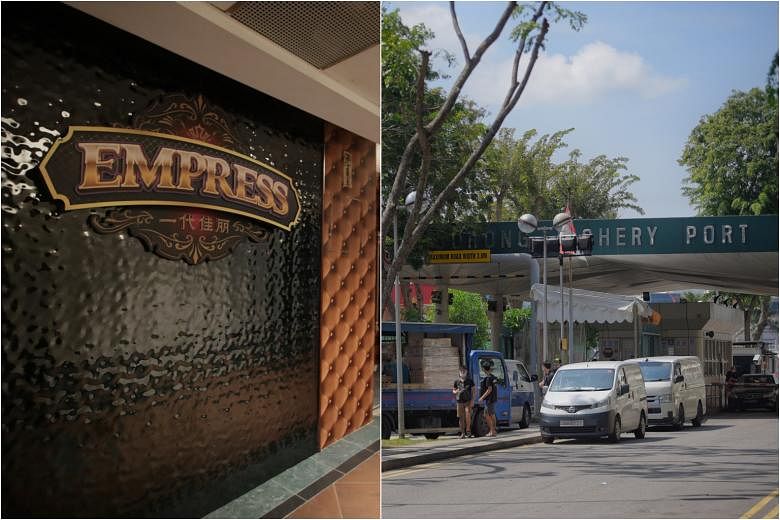SINGAPORE - Two of Singapore's largest active Covid-19 clusters - at KTVs and the Jurong Fishery Port - are linked, and studies are ongoing to establish their relationship, said Health Minister Ong Ye Kung on Monday (July 19).
In a Facebook post, Mr Ong said that the two clusters differ genetically from the Delta variant that infected people in the clusters at Tan Tock Seng Hospital and Changi Airport, but are closer to what has been detected in imported cases from Indonesia.
He said studies are ongoing and findings will be explained to the public when the Ministry of Health (MOH) has more conclusive results.
"One thing is clear - when countries in the region have big outbreaks, we are always at risk," he added.
As at Sunday (July 18), there were 173 cases linked to the KTV cluster and 42 cases linked to the Jurong Fishery Port cluster.
Mr Ong noted that there were 88 local cases on Sunday - the highest in a single day for this year.
"It reflects the transmissibility of the Delta variant, and was a result of the combined effect of two big clusters - KTV and Jurong Fishery Port.
"As we deal with these two big clusters and test extensively, we should continue to expect many reported cases in the coming days, and must be prepared to make adjustments or even take decisive actions to suppress the cases."
He said that while the KTV cluster is "settling down", the one at Jurong Fishery Port is rising worryingly.
More than 5,000 staff, hostesses and patrons have been tested for the KTV cluster, and the yield is trending down by the day. "In other words, we are exhausting the uncovering of cases from our various rings of surveillance."
On the other hand, the port cluster is seeding cases in various markets, as well as in the communities around them.
He outlined four rings of defence to contain the cluster.
First, all 700 workers at the port have been quarantined and several cases have been uncovered.
The second ring covers more than 860 people such as fishmongers and delivery drivers who had visited the port. They have been issued health risk warnings, which means they have to undergo polymerase chain reaction (PCR) tests and self-isolate until they receive their results.
"We have more or less completed testing and detected 26 cases amongst them. It is a high number," said Mr Ong.
The third ring covers other stallholders of all other markets. Notifications have been sent to these stallholders as a precaution. They are scheduled to go to regional screening centres for testing.
The fourth ring covers residents around the market. Those living around markets with positive cases are advised to minimise their movements and social interactions, as well as do their marketing during off-peak hours.
The National Environment Agency is setting up wastewater testing in as many locations as practicable, and MOH will be mounting special operations in these estates, he said.
He said by Tuesday, half of Singapore's population should have received both doses of the Covid-19 vaccination and urged those eligible to get jabbed.
"Vaccination is gathering pace. For the past few weeks, we have vaccinated up to 80,000 a day. Demand has flipped towards second doses, which now account for about 70 per cent of all doses."
Those unvaccinated, especially the elderly, should stay home as much as possible, he said.
"Even for the vaccinated, if you have an unvaccinated senior at home, try to minimise your movement and social interactions too, as you may inadvertently bring the virus home and harm the senior."












